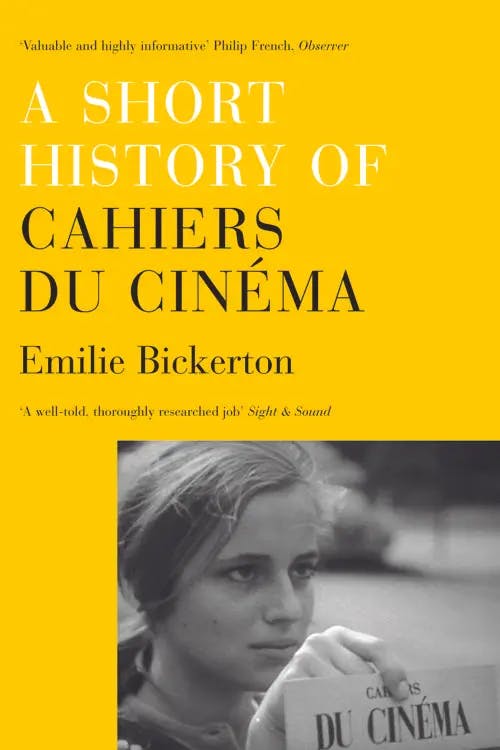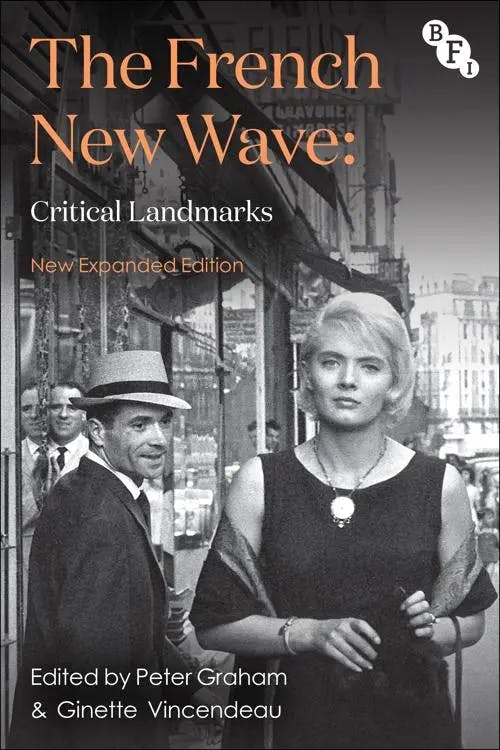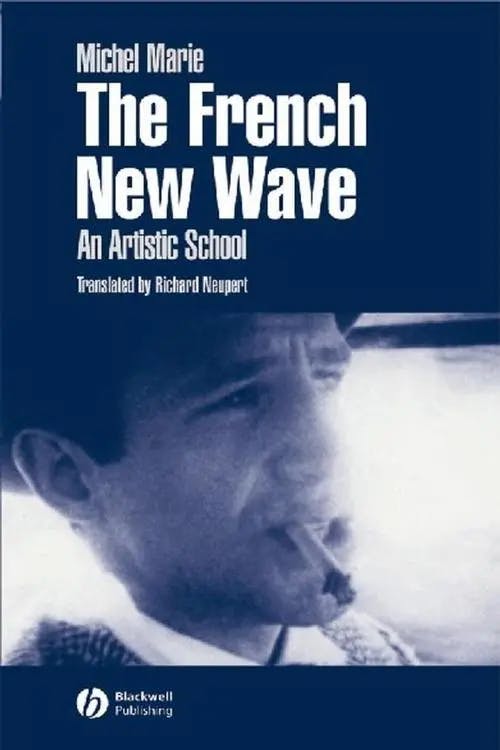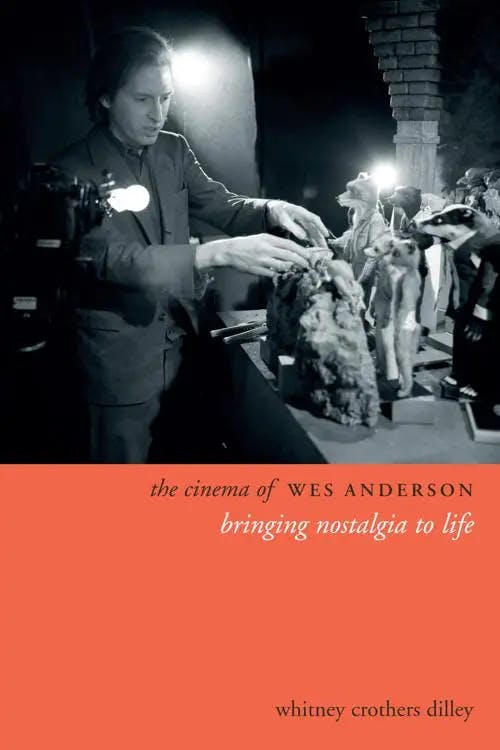What is the French New Wave?
PhD, Media Arts (Royal Holloway, University of London)
Date Published: 22.05.2023,
Last Updated: 20.07.2023
Share this article
Origins & Definition of the French New Wave
The French New Wave, or ‘La Nouvelle Vague’, was a film movement that emerged in Paris in the late 1950s. It has since become recognized as one of the most important and influential movements in cinematic history. It arose in post-war France at a time when film culture was booming; film journals and festivals were becoming a popular way to critically engage with the world of cinema, precipitating an abounding discourse on the value and tastes of film. One such film journal was the now famous Cahiers du cinema, first published in 1951. In A Short History of ‘Cahiers Du Cinéma’, Emilie Bickerton describes the initial project of the publication:
In its original conception the French film journal Cahiers du cinema had marked a break with the prevailing regimes of taste in the artistic culture of the post-war. In film this was defined by the silent tradition and French cinema de qualité -glossy literary adaptations, costume dramas or musicals – both unanimously celebrated for reasons motivated by patriotism or partisanship. Cahiers proposed a very different notion of cinema and turned consensus opinion on its head (2014).
Emilie Bickerton
In its original conception the French film journal Cahiers du cinema had marked a break with the prevailing regimes of taste in the artistic culture of the post-war. In film this was defined by the silent tradition and French cinema de qualité -glossy literary adaptations, costume dramas or musicals – both unanimously celebrated for reasons motivated by patriotism or partisanship. Cahiers proposed a very different notion of cinema and turned consensus opinion on its head (2014).
The founders of the French New Wave movement, known as the ‘Young Turks’ – François Truffaut, Jean-Luc Godard, Éric Rohmer, Claude Chabol and Jacques Rivette - started off as regular contributors to Cahiers. Before becoming pioneering film directors, they wrote as film critics for the journal. At this time, they did not have the resources to make films themselves so they instead spent their time thinking critically about cinema and its post-war trajectory. For the Young Turks, film - for the most part - had become stale. They did, however, draw some inspiration from contemporary filmmakers. While they were quick to disparage the dull products of the French film industry, they were interested in some aspects of Hollywood. Directors like Alfred Hitchcock and Howard Hawks proved particularly influential in the development of their project. Each of these directors had come to represent a unique and recognizable visual and storytelling style. This was of interest to the Young Turks because it positioned the film director as the locus of artistic control, presenting a break from what had become cinematic custom.
The Young Turks observed that there was a prevailing set of rules and conventions that cinema now attended to in one way or another; conventions in editing, in framing, mise-en-scène, and narrative that kept the filmmaking devices concealed to better immerse the audience in the world of the film.They did not believe that the director should have to hide behind the action of the film, controlled by the producers and studios. In short, they believed these rules of cinema were made to be broken. What was most important to the Young Turks was a re prioritization of the language of cinema: deconstructing the polished approach that had become the norm, reconstructing it in a way that reflected the vision and style of the filmmakers themselves. Because this new approach conveniently did not rely on expensive equipment or particular filming conditions, the Young Turks found they were able to put their new film theory to practice. The result was a series of films with a unique project known as the French New Wave.
In their comprehensive book, The French New Wave, Peter Graham and Ginette Vincendeau provide an overview of the significance of the movement:
Histories of the cinema all agree that the New Wave represents a radical break: it spread new ways of producing and making films (cheaply, quickly, outside the mainstream), it popularized the use of lighter technologies, made more ‘realist’ aesthetics fashionable, and introduced a new generation of directors, stars, cinematographers, producers and composers to the world. It also, significantly, transformed the way people saw and analysed films, in particular establishing the centrality of the cinematic auteur as supreme creative force. (2022)
Edited by Peter Graham & Ginette Vincendeau
Histories of the cinema all agree that the New Wave represents a radical break: it spread new ways of producing and making films (cheaply, quickly, outside the mainstream), it popularized the use of lighter technologies, made more ‘realist’ aesthetics fashionable, and introduced a new generation of directors, stars, cinematographers, producers and composers to the world. It also, significantly, transformed the way people saw and analysed films, in particular establishing the centrality of the cinematic auteur as supreme creative force. (2022)
This article seeks to elucidate this manifold contribution of The French New Wave to the world of cinema.
French New Wave and the auteur
One of the many significant contributions that New Wave made to the history of cinema was the development of auteur theory. Auteur theory is the simple idea that the director of a film is the film’s author. The Young Turks have been labeled the ‘partisans of auteurism’ (Morisson, 2018). ‘The auteurs of films, thanks to us’, wrote Jean-Luc Godard, ‘have entered definitively into the history of art’ (1959).
In reappraising the conventions and values of cinema, French New Wave made space for film directors to express themselves, to let the camera be a medium of their own creativity rather than subservient to the script and the storytelling protocol of mainstream cinema. While Hitchcock and Hawks served as auteur prototypes, this concept of the relationship between directors and the films was based on Alexandre Astruc’s idea of the ‘camera-stylo’ or ‘camera-pen’ (1948). In ‘The Birth of a New Avant-Garde’, Astruc explains the meaning of the camera-pen, writing:
this metaphor has a very precise sense. By it I mean that the cinema will gradually break free from the tyranny of what is visual, from the image for its own sake, from the immediate and concrete demands of the narrative, to become a means of writing just as flexible and subtle as written language. (1948)
A decade later, the pioneers of the French New Wave rose to Astruc’s predictions, distilling ‘the idea of the cinema expressing ideas’ into the tenets of a new film movement (1948). Andrew Sarris, who is often credited as bringing auteur theory to prevalence in the United States, breaks these tenets into 3 parts:
‘the technical competence of the director’,
‘the distinguishable personality of the director’,
and ‘interior meaning’ (1962 [2018]).
These categories speak to the propensity for the director to appear, through both conscious and unconscious stylistic choices, in the films they make. The practitioners of French New Wave hoped this would facilitate the more mainstream use of film as an art form, each piece of cinema exhibiting a unique vision and mode of expression rather than a banal form of entertainment. With this priority in mind, the characteristics of French New Wave cinema become more easily analyzed and understood.
Below is a clip of revered French New Wave critic and director Francois Truffaut describing the meaning of auteur theory, or what they alternatively called ‘les politiques des auteur’.
French New Wave Characteristics
Firstly, the visual style of French New Wave was significantly rougher around the edges than what was coming out of high-budget studio productions. This was in part a reflection of the resources that directors of the French New Wave were working with. These films were typically low budget, shot on location on small, hand-held cameras. Furthermore, the actors cast were mostly amateur, a departure from the star-studded world of classical Hollywood. Although this resulted in aspects of a hyper-realist, documentary style aesthetic, French New Wave cinema celebrated these restraints because they allowed the camera to be an unencumbered extension of the director. The camera could squeeze in small spaces with the actors, often filming them from the backseat of a car or from the passenger seat, in tight bathrooms and on narrow balconies, creating a sense of intimacy between the camera and the characters. This sense is heightened by the way that French New Wave cinema breaks the fourth wall, with characters staring into, or even talking directly, at the camera.
Famous French New Wave director, Jean-Luc Godard, is particularly associated with this break in filmic tradition. This is a recurring feature of Godard’s 1965 film Pierrot le Fou, where the two central characters, Ferdinand (Jean-Paul Belmondo) and Marianne (Anna Karina), take turns addressing the camera as if the camera were a character itself. Notably, however, these characters acknowledge the presence of the viewer. In one instance, after Ferdinand turns to the camera, positioned in the backseat of their convertible, Marianne asks him who he’s speaking to, to which he responds, “the audience”. This contrasts the almost documentary visual style of the film, resulting in an artistic visual style and means of storytelling:
French New Wave films also exhibit a distinct editing style. The editing of these films is in some cases the most immediately recognizable feature, already deviating from the conventions of invisible editing that maintained the continuity and made it easy for viewers to suspend their disbelief. Perhaps one of the most overt departures from conventional cinematic editing was the New Wave director’s use of the jump cut. The jump cut creates a spatial and temporal rupture and disrupts filmic continuity by putting two different shots together. Godard’s Breathless (1960), originally titled À bout de souffle, provides multiple examples of this. Sequences are fragmented by the quick cut from one moment to the next in an assault of the strict conventions of editing. This scene is an emblematic example of Godard’s use of the jump cut:
The way this scene is constructed offers the viewer a sense of acceleration – the characters appear to cover a lot of ground in a short amount of time and a short conversation appears to take place over a longer period of time – disrupting the spatial and temporal flow viewers had grown to expect from cinema. It is this effect that has labeled some of Godard’s work as an ‘elegy to speed’ (Morrey, 2019). This editing choice deliberately draws attention to the medium of the film and the hand of the cinematic auteur, subverting the previously established filmic language.
The same editing technique can be observed in Agnès Vada’s Cléo from 5 to 7 (1962). We see the character of Cléo sitting down on her bed as her maid approaches. Abruptly, this shot cuts to the close-up of hands running through blonde hair, and then again to a kitten being played with. The French New Wave directors knew that the audience had the capacity to make connections of these types of cuts without overt exposition. As the viewers, we understand that these are all small parts of a simultaneous scene: the maid undoes Cléo’s hair while Cléo plays with her kitten. The same directorial assumption is made in the French New Wave tendency to exclude establishing shots. Instead of a shot showing the exterior location of a subsequent scene, French New Wave directors chose not to contextualize the action in such an overt way, crediting the ability of the audience to make their own connections and fill in the gaps of the action.
This approach to editing was a deliberate attempt to draw attention to the construction of the film. Arguably, this prompts viewers to consider the filmmakers, as well as the practice of filmmaking, as part of the viewing experience. This effect is heightened in the New Wave tendency to self-reference. In another sequence of Cléo from 5 to 7, for example, Cleo goes to the movies where she watches a film starring Godard himself, acknowledging the medium of cinema and the auteurism of the French New Wave. The French New Wave is awash with this kind of tongue-in-cheek intertextuality.
Another foundational film of the French New Wave that offers a slightly different stylistic approach is Truffaut’s The 400 Blows (1959). The semi-autobiographical film follows a rebellious young boy, Antoine, growing up in Paris. It portrays at once the highly personal story of family life and oppressive educational and disciplinary institutions, and the universal experience of the turbulence of adolescence. Although The 400 Blows was made under the same circumstances and with the same practices as Godard’s films, it is overall more immersive and less self-referential. The 400 Blows has stylistic similarities to its more exultant counter parts - the film opens with a fragmented driving sequence and ends with Antoine breaking the fourth wall by staring directly into the camera - however it is the first in series of Truffaut films that are less experimental, but no less existential. This granted Truffaut a more commercially successful career with numerous academy award nominations. Truaffaut’s films are consistent with those of Godard’s in their sensuous and technical study of the way identities meander the world, often with a sense of existential uncertainty. Below is a clip from the closing moments of The 400 Blows.
Consider this closing shot from the film, notice how the length of the tracking shot draws attention to the filmmaking process in a similar way to Godard’s camera, but in a tonally divergent manner. Truffaut's camera lingers on Antoine’s ceaseless running as a reflection of his existential journey - where is he running to? What is he running from? When Antoine reaches the seafront he has nowhere left to go, and turns towards the camera. It zooms in on his face and the film closes with a still-frame on this fleeting moment - Antoine looking directly into the camera, as if pleading with the audience for help. Where Godard’s breaking of the fourth wall is often playful and almost mischievous, Truffaut’s here in this moment feels sombre and introspective.
Despite being two of the most prominent members of the French New Wave, Godard and Truffaut ultimately disagreed on what cinema should be. Truffault felt there was still cinematic magic to be explored and Godard found it immoral to seduce cinemagoers, instead committing his work to revealing and experimenting with the realities of the filmmaking process. These divergent viewpoints seem reflected in the style and tone of their cinematic oeuvre, as detailed above.
Examples of French New Wave films
Although, like in any young vanguard of innovating artists, there were tensions and disparities of vision, the French New Wave directors comprised a healthy and highly influential catalog of films. Here is a list of some of the most impactful pieces of French New Wave cinema:
- The 400 Blows (Truffaut, 1959)
- Breathless (Godard, 1960)
- La Pointe Courte (Agnès Vada, 1955)
- Les Bonnes Femmes (Chabrol, 1960)
- Shoot the Piano Player (Truffaut, 1960)
- Pierrot le Fou (Godard, 1965)
- My Night at Maud’s (Rohmer, 1969)
- Céline and Julie Go Boating (Rivette, 1974)
The Legacy of French New Wave
The characteristics of New Wave cinema – jarring jump cuts and meandering existential plot lines – may no longer seem as cutting edge or novel as they once were; they seem to us now more trendy in a vintage sense. That is because the fast-paced nature of contemporary audio video culture continues to challenge our concept of the medium of film and the conventions we’ve come to recognize. Hence, French New Wave cinema tends to be confined to a particular historical moment; in fact, it is widely thought to have lasted a mere decade, with most of the influential French New Wave films made between 1959 and 1965.
What remains of the innovations of French New Wave cinema is the way in which cinema reflects the hand of the auteur. Michel Marie asserts as much in The French New Wave: An Artistic School, writing,
one of the New Wave’s most direct consequences was to impose the idea that cinematic creation requires a regular renewal by young directors. (2008).
Michel Marie (translated by Richard Neupert)
one of the New Wave’s most direct consequences was to impose the idea that cinematic creation requires a regular renewal by young directors. (2008).
These young directors of the French New Wave reclaimed cinema from the big studios and producers, challenging and shifting the filmic conventions they established. As Douglas Morrey notes, “the model of auteur cinema that shapes our thinking about film today stems, in large part…from discourses and practices popularized by the generation of the New Wave” (2019). This model refers to the structure of production and the locus of artistic vision and cinematic innovation.
We need not look far for evidence of the power and prevalence of auteur cinema today. Contemporary directors are often associated with a particular aesthetic and type of storytelling. Wes Anderson, for example, is a director whose aesthetic has become so distinct – with his pastel colors, symmetrical shots, and eccentric characters – that recreating it in the context of everyday life has been a recent TikTok trend. In The Cinema of Wes Anderson, Whitney Dilley acknowledges the connection between this type of filmmaking and the French New Wave, writing,
Anderson is thus a classic example of a filmmaker that the Cahiers du cinéma critics would have labeled an auteur – an artist who imprints his personality and preoccupations on each work so strongly that he is considered the primary “author” of the film. (2017)
Whitney Crothers Dilley
Anderson is thus a classic example of a filmmaker that the Cahiers du cinéma critics would have labeled an auteur – an artist who imprints his personality and preoccupations on each work so strongly that he is considered the primary “author” of the film. (2017)
The same can be claimed for a number of other directors: David Lynch, Quentin Tarantino, Martin Scorsese, Woody Allen and Christopher Nolan - to name a few - have all left their distinct mark on the world of cinema. So important is the role of the director in cinema today, that their name is often the most significant selling point of a new piece of work because it tends to set viewer expectations and create a sense of anticipation. If the director is Jordan Peele, we might expect a satirical horror that critiques the treatment of Black Americans, or for Greta Gerwig, a feminist coming of age film with fast and witty dialogue and an indie aesthetic.
These are examples of the way that contemporary auteur theory functions, often transcending the marketing affordances of genre and celebrity. This type of filmic authorship was made possible by the boldness of the French New Wave. For cinema to continue to be an expression of a unique vision, new ‘young directors’ must continue to reappraise filmic conventions and challenge the previously established language of cinema (Marie, 2008).
Further French New Wave reading on Perlego
Wiegand, C. (2012) French New Wave. Oldcastle Books. Available at: https://www.perlego.com/book/1707410/french-new-wave-pdf
Filippo, M. (2021) Provoc Auteurs and Provocations. Indiana University Press. Available at: https://www.perlego.com/book/2040172/provoc-auteurs-and-provocations-screening-sex-in-21st-century-media-pdf
Roud, R. (2019) Godard. 1st edn. Bloomsbury Publishing. Available at: https://www.perlego.com/book/1690759/godard-pdf
Benezet, D. (2014) The Cinema of Agnès Varda. Columbia University Press. Available at: https://www.perlego.com/book/774550/the-cinema-of-agns-varda-resistance-and-eclecticism-pdf
Salter, A. and Stanfill, M. (2020) A Portrait of the Auteur as Fanboy.University Press of Mississippi. Available at: https://www.perlego.com/book/1732921/a-portrait-of-the-auteur-as-fanboy-the-construction-of-authorship-in-transmedia-franchises-pdf
What is the French New Wave in simple terms?
What is Auteur Theory in simple terms?
What are some examples of the French New Wave?
What are the key characteristics of the French New Wave?
Bibliography
Astruc, A. (1948) L’Écran Française.
Bickerton, E. (2014) A Short History of ‘Cahiers Du Cinéma’. Verso UK.
Dilley, W.C. (2017) The Cinema of Wes Anderson. Columbia University Press.
Godard, J. (1959) Arts.
Graham, P., and Vincendeau, G. (2022) The French New Wave. 2nd edn. Bloomsbury Publishing.
Marie, M. (2008) The French New Wave. 1st edn. Wiley.
Morrey, D. (2019) The Legacy of the New Wave in French Cinema. 1st edn. Bloomsbury Publishing.
Morrison, J. (2018) Auteur Theory and My Son John, Bloomsbury Publishing.
Sarris, A. (1962) in Morrison, J. (2018) Auteur Theory and My Son John, Bloomsbury Publishing.
PhD, Media Arts (Royal Holloway, University of London)
Aoiffe Walsh has a PhD in Media Arts from Royal Holloway, University of London. With a background in film studies and philosophy, her current research explores British literary modernism, with a particular focus on surrealism between the wars. She has lectured and published pieces on documentary and film theory, film history, genre studies and the avant-garde.




